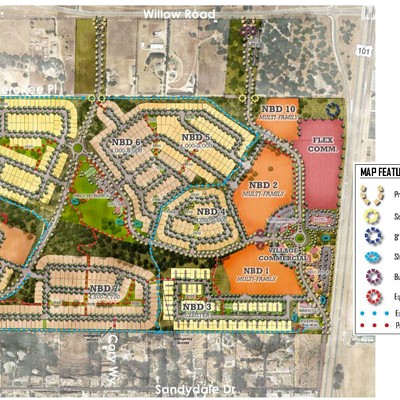May 19 was the deadline for PG&E to apply for a portion of the $6 billion in federal funds allocated to propping up distressed nuclear power plants. It came and went, but the fate of the Diablo Canyon plant—clouded by Gov. Gavin Newsom’s sudden about-face on its closure—lingers on in the form of a 45-day extension of that deadline.
Two months ago, everyone should have gotten the message, loud and clear and with finality, that the Diablo Canyon Power Plant should shut down by 2025 as scheduled, and sooner would be better.
As the Santa Barbara Independent reported in chilling detail in its March 29 edition, a steel pipe in the plant’s backup cooling system had sprung a leak in July 2020 “because the pipe had become badly corroded. ... But the real problem highlighted by the Office of Inspector General for the Nuclear Regulatory Commission (NRC) was the failure of on-site safety inspectors with the NRC to detect the corrosion that led to the leak during an inspection of the plant that took place three months prior.”
“Worse yet, according to the report, inspectors claimed to have inspected the area of the plant in question, when in fact they had not.”
Stuff happens, as Naoto Kan, former prime minister of Japan, pointed out in a May 12 letter to Gov. Gavin Newsom in which he illustrated the cascading failures that led to the Fukushima disaster. He concluded, “I advise you to shut down the nuclear plant as soon as possible.”
But set that aside.
That $6 billion federal pie was cooked up to bail out nuclear power plants that can’t compete because billions of dollars’ worth of tax breaks, subsidies, and insurance waivers over seven decades have not sufficed to keep them from “dying of an incurable attack of market forces,” in the unimprovable phrase of Amory Lovins, chief scientist at the Rocky Mountain Institute.
When Assemblyman Jordan Cunningham rises to intone, “There’s going to be a choke point on the grid. Can we really afford to lose Diablo’s energy?” the correct responses are, respectively:
1. Diablo is the choke point.
2. Yes.
Once again in the incisive take of Amory Lovins, the decision to shut down Diablo was made “in order to save money … and make the grid work better by taking this big block of inflexible capacity off the grid so that variable renewables have more room to operate.”
But for the panoramic sweep of just how much Diablo is not needed, it’s hard to beat the analysis of Sierra Club California Energy/Climate Committee member Robert Freehling. Let him count the ways:
On the electricity: “PG&E does not need it; they have a huge surplus of electricity—about 40 percent more than their customers can use. They tried to pawn off the excess nuclear power to Community Choice Energy programs a couple years ago.”
On climate/greenhouse gas: “Diablo has already been ‘replaced’ by California several times over, with rooftop solar, the Renewables Portfolio Standard, phasing out coal, and energy efficiency. Existing policy for more renewable energy, efficiency, and rooftop solar will replace Diablo several more times.”
On grid reliability: “The plant is not needed for general system reliability for California. In fact, this nuclear plant was one of the main reasons for the August 2020 power outage. Because CAISO [California Independent System Operator] was afraid Diablo might fail and bring down the Western regional grid, they didn’t trust the nuclear plant to keep running reliably for even just one hour, so they called for rotating outages. In effect, customer power outages were used to ‘back up’ the nuclear plant.”
On those blackouts: “The ‘need’ at that time was not because of California’s electricity demand, but because of CAISO’s malfunctioning market software that was allowing export of about 3,000 megawatts of power to other states in the middle of a heat wave.”
On that $6 billion: “California would need all of it just to cover the above-market, stranded cost of keeping Diablo open until 2025, currently being covered by ratepayers. That would leave nothing to pay for keeping it running after 2025, or to pay for the other overpriced nuclear plants around the United States that are also wasting billions of dollars.”
And here’s the California Public Utilities Commission, responding to nuclear fans enamored of the notion that Diablo’s closure will trigger a flood of coal power into California:
“ … the state has ordered an unprecedented amount of new clean energy procurement —11.5 gigawatts —to replace the retirement of Diablo Canyon (along with other aging gas plants that are retiring). This includes wind, solar, batteries, geothermal, and long-duration storage that will be online starting in 2023.”
On April 30, a landmark was achieved when nearly 100 percent of California’s electrical grid was powered by renewable energy.
So yes, as it turns out, contrary to the constant drumbeat of Diablo’s last-ditch defenders who reach back to the 1980s to launch vintage attacks against renewable energy, that is a thing that can be done.
And that fact is a pretty good indicator that more such days are coming, and with more frequency—no nukes needed.
Andrew Christie is the director of the Santa Lucia Chapter of the Sierra Club. Reach him through the editor at [email protected].









